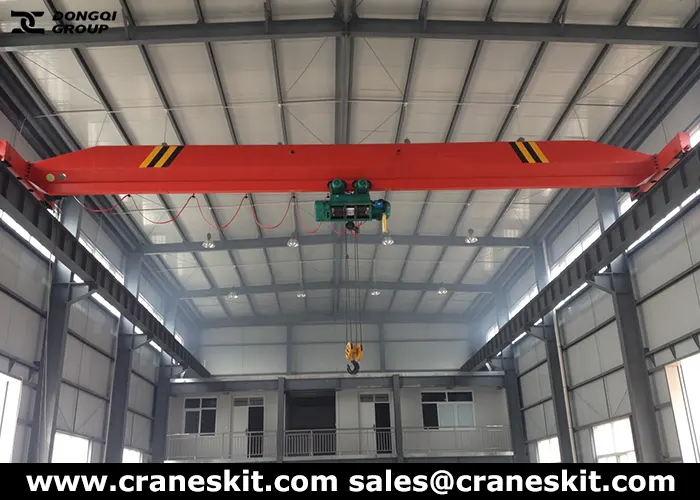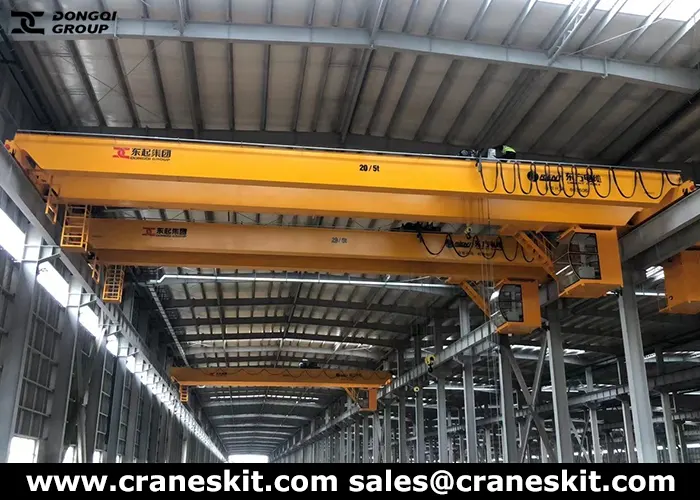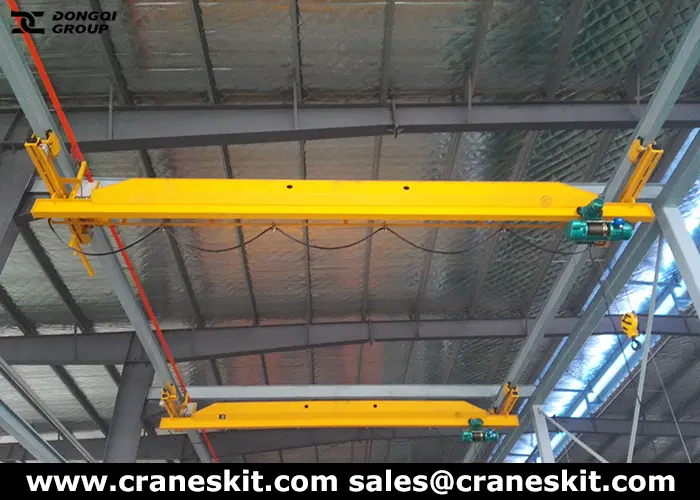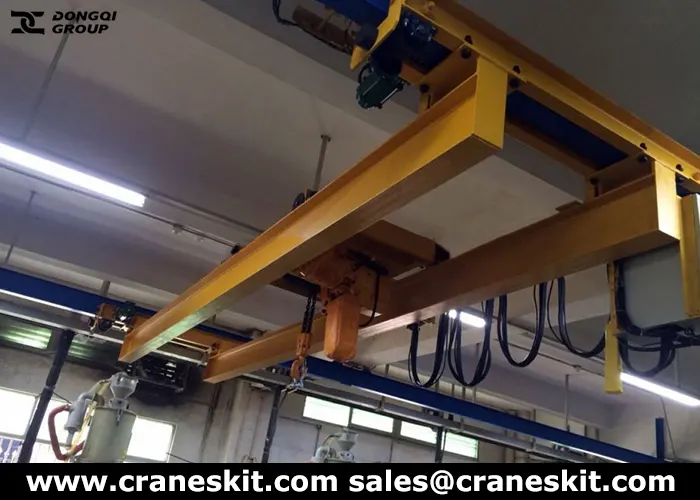Top running crane vs. Underhung crane: Differences and Advantages
Overhead travelling cranes come into various crane designs and configurations with diverse of crane specifications and parameters to meet different lifting requirements and industrial application conditions, and many of which function a specific purpose for a particular operation. Will your crane's end trucks /
end carriage will move on top of the crane runway or on the bottom flange of the crane runway? Top running
bridge crane & under hung bridge crane, which is right overhead travelling crane for you? Let's learn more about the advantages of a top running
overhead crane system, and a
underhung overhead crane system and how they distinguish from each other to help you find out the the right overhead travelling crane solution.
Top-Running Overhead Cranes
Top-running overhead cranes run on a fixed rail mounted on top of each runway beam, which allows the end trucks to carry the girder and hoist along the top. These cranes can be set up as a single girder or double girder depending on the application needs. A single girder has a trolley and hoist mounted on the bottom, whereas a double girder uses a top running trolley and hoist, allowing for additional lift height and a higher hook height.

 Some key advantages of top-running overhead cranes include:
Some key advantages of top-running overhead cranes include: - No limiting capacity. This allows for the ability to handle both small and large loads.
- Added lift height. Being mounted on top of each runway beam allows for increased lift height, which is beneficial to buildings with limited headroom.
- Built for higher capacities. Top-running overhead cranes are built larger than under-running cranes to grant them the ability to handle higher capacities.
- Easy installation. Since the crane is supported by the runway beams, it eliminates the suspended load factor to make installation simple.
- Less maintenance. Over time, top-running overhead cranes do not require as much maintenance other than the routine checking of the tracking for proper alignment and any issues.
Under-Running Overhead Cranes
Designed with flexibility and functionality in mind, under-running overhead cranes have a user-friendly design that provides ultimate versatility for meeting all your production needs. These cranes are also known as underhung cranes because the bottom flange of the runway beam offers support for the wheels to move the bridge across the facility.
The trolley and hoist of an under-running overhead crane move across the bottom flange of the bridge beam, lowering the crane’s hook and lift height. Under-running overhead cranes are usually set up as single girder because a double girder design is often more expensive and not suitable for the application.

 Some advantages of under running overhead cranes include:
Some advantages of under running overhead cranes include: - Operates well in wide bays. Underhung cranes can be operated in multiple runways, reducing the depth of the girder.
- Lighter overall design requirements. Under-running overhead cranes are much lighter, which removes the need for additional supporting columns that take up precious floor space. Instead, the crane utilizes the existing overhead building structure for support.
- Lower costs. The lightweight design and use of the existing ceiling trusses or roof structure result in lower equipment costs.
- Ability for multiple crane installations. It is possible to install under-running cranes next to each other and operate them at the same time for increased production efficiency.
Which Type of Overhead Crane is Suitable for You?
Top running overhead crane and underhung bridge crane, which type of crane is right for your application? The following factors can help you to select a suitable crane system for your application:
- Is the existing support structure capable of supporting the weight of crane and loads?
- Any additional support structure are required?
- Are there existing runways which can accommodate the crane?
- What is the capacity of the loads required to be lifted?
- What is the condition of the available overhead room ? High, unobstructed ceilings, or limited headroom?
- What is the lifting height required?
- How much of the bridge will the hoist trolley need?
- Does your loads need to be handled near the edges or walls of the building?
- How is the condition of floor space?
DQCRANES top-running crane systems are widely adopted for handling heavy loads while under-hung bridge cranes are widely used for flexibility and functionality with an ergonomic design providing versatility and usability. If need more information or request a quote to our top running overhead crane or under hung bridge crane, please feel free to
contact us. Send us your inquiry on overhead travelling crane today.



